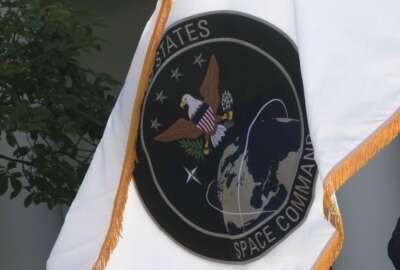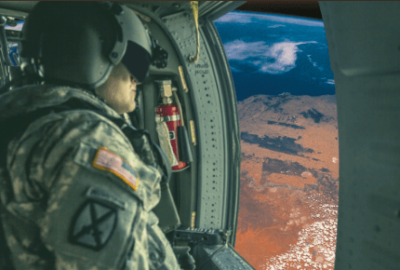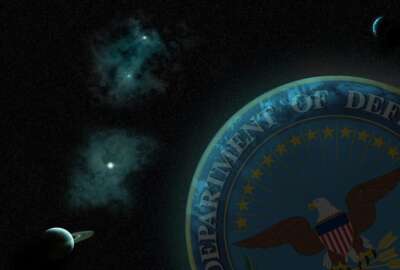 First Look
First Look Space Force taking on new members, sending acquisition recommendations to Congress
The new service wants to take on 1,800 in the next 60 days.
The Space Force is preparing to take on more personnel from other organizations and rethink its acquisition structure as the new service continues to grow and figure out exactly how it will operate as a full-fledged branch of the military.
New authorities granted by Air Force Secretary Barbra Barrett will assign about 1,800 people from 23 Air Force organizations to the Space Force, according to Lt. Gen. David Thompson, vice commander for the Space Force.
“She’s given us 180 days to do that so we can continue to build out the Space Force,” Thompson said during a Thursday virtual chat hosted by Space News. “She made it very clear when she signed the memo that while the memo gave us 180 days, she expected some of these transfers to occur closer to 60 days.”
The Space Force has 16,000 troops assigned to it, but only 88 official members. Those members are Chief of Space Operations Gen. Jay Raymond, the top enlisted leader Chief Master Sgt. Roger Towberman and the 86 Space Force members that just graduated from the Air Force Academy. The graduating class consisted of 57 space operators, three intelligence officers, four cyber experts, 10 engineers and 12 acquisition professionals.
Between 6,000 and 7,000 Air Force space operators will be offered the opportunity to transfer into the new service.
On May 1, the Space Force will open up its application process to anyone in the Defense Department.
“We have a need for a certain number of other specialties — intelligence officers and intelligence professionals, cyber operators, acquisition officers, engineers,” Thompson said. “Across the Air Force there will be an opportunity for those specialties to volunteer.”
The application window will be open for 30 days.
Thompson said it is likely the service will get more applications than positions open. The Space Force is setting up a board to review applications and may even institute an interview process to see who will be selected.
The Space Force owes Congress a report in June on how it will handle its human capital. Thompson said the service wants to open its aperture and bring in people “off the street.”
Acquisition and budget
The 2021 budget was a little rushed for the Space Force considering DoD wasn’t sure if it would be a service or not as it was developing its spending priorities.
Thompson said 2022 will be the first truly standalone budget for the Space Force.
“We are in the middle of creating the 2022 budget right now. As you might imagine it’s an interesting exercise,” Thompson said. “The emphasis of space inside the Department of Defense will continue. That guidance is already clear. It is going to continue the focus on the shift we have made over the last several years building resilient systems, building systems that can be defended and protected and operate through any potential threats and conflicts.”
The Space Force is also finishing a much-awaited report on acquisition. Thompson said senior leaders are in the process of reviewing the report now before it’s submitted to Congress.
That report makes recommendations for creating a lean, agile space acquisition system that makes lines of authority clear across the many organizations that have their hands in space acquisition.
Thompson was tight lipped on the details of the report.
“What I can say is we are definitely engaged in a process of developing what the organization should look like, how it should work together with other agencies, where the organizations need to be integrated, where they need to work independently and the lanes in the road among all of them as part of the design work,” Thompson said.
Copyright © 2025 Federal News Network. All rights reserved. This website is not intended for users located within the European Economic Area.
Scott Maucione is a defense reporter for Federal News Network and reports on human capital, workforce and the Defense Department at-large.
Follow @smaucioneWFED






